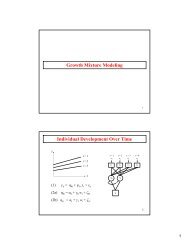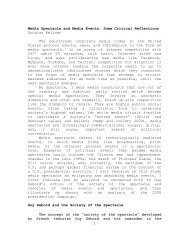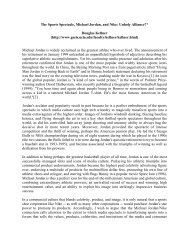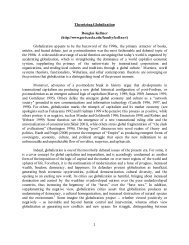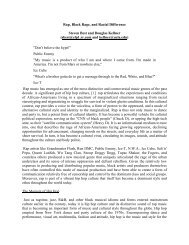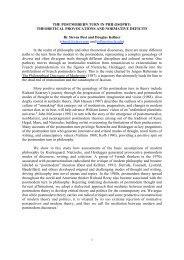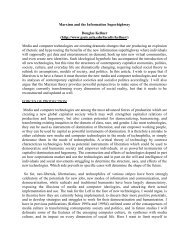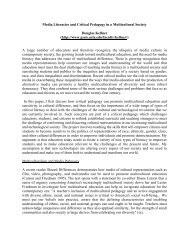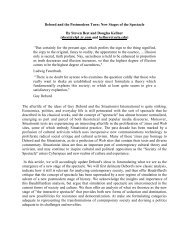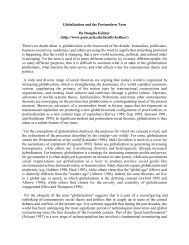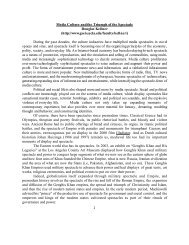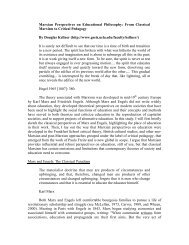Rachel Leff and Rachel Longaker IS281 Professor Maack ... - Ucla
Rachel Leff and Rachel Longaker IS281 Professor Maack ... - Ucla
Rachel Leff and Rachel Longaker IS281 Professor Maack ... - Ucla
You also want an ePaper? Increase the reach of your titles
YUMPU automatically turns print PDFs into web optimized ePapers that Google loves.
eader, but can have a large effect on the way the reader encounters the text. While<br />
McLean does not offer a specific theoretical framework for his work, it might be accurate<br />
to describe the theoretical perspective as aesthetic: he is interested not in the social,<br />
economic, or political dimensions, for example, of book design, but rather the aesthetic<br />
dimension.<br />
To set the stage for his discussion of Morris’s impact on book design, the author<br />
describes the decline in the quality of printing <strong>and</strong> book design in nineteenth century<br />
Engl<strong>and</strong>. Although there were fine printers working throughout this period, they were the<br />
exception rather than the rule. As the Industrial Revolution charged through Engl<strong>and</strong>,<br />
most of the processes involved in printing became mechanized, which brought with it a<br />
rapid increase in the amount of books published, but also diminished their quality, in<br />
terms of paper, ink, type faces, <strong>and</strong> design aesthetics in general.<br />
It was out of this milieu that William Morris emerged as a printer. Interested in<br />
showing how a book should be a thing of beauty, Morris looked back to the Middle Ages<br />
as well as the early days of the printing press for inspiration. McLean outlines Morris’s<br />
involvements with printing throughout his life, which culminates in his founding of the<br />
Kelmscott Press in 1891, which he describes as "his greatest artistic achievement" (7).<br />
Interestingly, however, McLean does not believe that Morris’s design aesthetic, with its<br />
heavy medieval influences <strong>and</strong> high price tags, bore significant influence in the 20 th<br />
century. His influence is seen rather in page layout, specifically in choosing margins <strong>and</strong><br />
in viewing two facing pages as one single design element, as well as in a renewed interest<br />
in the quality of paper, ink, <strong>and</strong> bindings—all elements that were greatly diminished in<br />
the early days of mass production. And while Morris’s style was copied in mass produced<br />
<strong>Leff</strong> <strong>and</strong> <strong>Longaker</strong>, Page 19




